How do these marketing channels stack up?
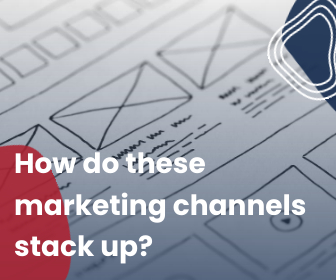
There are A LOT of different marketing channels out there. What are the pros and cons of some of the common ones?
Social Media
Pro
There are over 3.8 billion people on social media around the world. Social media is a fantastic way to connect with customers, build brand loyalty, and generate sales.
People don’t just want to buy from companies because they have good products and services. They want to know what your brand stands for in addition to what it sells. Social media can help potential customers get to you. Social media feel like a 1-on-1 conversation between the brand and consumer, which helps build loyalty.
Con
A lot of the value from social doesn’t show up immediately. It’s rarely simple to track social media’s ROI. Often the goal of social media is not just to generate sales but instead to build connections. Without measurable results, using social media can be discouraging.

Pro
Often it a brand’s only way to communicate with customers and can feel very one on one. A lot of millennial and gen z’ers expect to communicate with brands through email. Also, pretty much everyone has email so you know you will be able to communicate with people through email.
Con
We all get so. many. emails. Most office workers receive 127 every day. It can be hard to stand out from the crowd. People don’t have time to read emails that don’t actually provide them value.
Email marketing also has a lot of laws and rules connected to it that can hurt you if your aren’t careful!
Content/SEO

Pro
Customers often rely on a business’s website for information. Especially for local businesses, it can be the only way to know a shop hours or address. Putting the information on a website instead of a social media or directly in a browser legitimizes the information.
Good SEO gives your website credibility. It makes it easier for people to find your website when they search for it. And it helps create a smoother user experience.
Con
Bad SEO can hurt you. Most searchers never go past the first or second page of Google, though, which is why those top spots in the search results are so coveted. Having the proper SEO can prevent your website form getting organic traffic.
53% of all trackable website traffic comes from organic search. SEO is the main thing influencing how easy it is to find you online organically. Which is probably why it’s estimated that agencies and brands spent over $79.27 Billion on SEO services last year.
Google Ads

Pro
Where are people? On their phones. So, google ads is an extremely effective way to find people where they are. Google ads is great for brand awarness as well as retargeting. It is great if you want measurable results and analytics.
Con
Billboards, signs, posters, newspapers, and magazines all exist with in different physical spaces. With digital advertising however, we are all competing for the same ad space. That ad space is worth more now has less guarantees attached to it.
Trying to figure Google ads can feel like rocket science. There’s a large learning curve and it can a while to feel confident in the set up.
Print and Mail

Pro
Direct mail average open rate is somewhere between 68 and 90%, which is double, triple, or quadruple the average open rates of other marketing channels. Do people who open direct mail actually purchase? Yes! On average people who receive direct mail purchase 28% more items and spend 28% more money!
Why is direct mail so effective? It comes down to fact that we (humans) like getting mail. 41% of Americans of all ages look forward to getting their mail every day. We still want very real things in our hands, which is something totally lost in email inboxes or on social media. That tactile connection translates into 💰.
Con
Since Direct mail requires use of the postal system it has fixed costs. The graphic design of the mail piece may also have an additional cost. Using direct always requires a bit of math and if done wrong can hurt your ROI.
It’s not always posable to see direct, measurable results, from Direct mail campaigns. And if you can measure results, it may take a while to get the full picture.
Another thing that can be a disadvantage to direct mail is that you need a really good foundation of address data. The problem us that a lot of data providers don’t make sure that their data is accurate and that hurts the effectiveness of your campaign.
Connected TV

Pro
TV is a time-tested advertising channel. Although it’s a lot less common than it used to be, it can still be very effective. Many marketers are using CTV (connected TV) or OTT (over-the-top) channels to target consumers using streaming services and connected TV devices such as Hulu and Roku. Advertises are embracing these platforms as more and more ad space becomes available. Spending for CTV advertising is expected to grow from $6.94 billion in 2019 to $8.88 billion in 2020, a 28% increase.
Con
With customer attention spread so thin and cable tv subscriptions consistently falling, (over 16 million in the last five years) there’s a lot less advertising space available. Content consumption is at an all-time high and therefore, competition for viewer’s attention is as well. 84% of marketers say that it is getting harder to grab a consumer’s attention with television advertising alone.
Audiences today expect personalized and relevant targeted ads. Linear TV (cable and network television) often fall far behind in targeting capabilities. Therefore, it can be a challenge for advertisers to figure out how to integrate linear TV into their campaigns.
Data, Analytics, and Insight: What’s The Difference?

Data, analytics, and insight is kinda our thing. However, it seems like a lot of people use those words almost interchangeably. Are they the same thing? What do they mean for your business?
Data = The Information
Analytics = The Connections
Insights = The Actions
Data is pure information. For example, data about your current customers (first party data) is information such as average age, gender, location, or occupation. Analytics are the patterns that connect those things.
That would mean that data is knowing that you sent over 20,000 emails in June 2021. Analytics are knowing that your average open rate is 22.8% and your click through rate is 0.09%. The analytics show you a clearer image of the data.

I heard a really great illustration about this recently. Thinking about data and analytics can be compared to looking at an impression painting (like this one: The Cliff of Aval Etretat by Claude Monet.) Up close, all you see are the brush strokes and colors. That’s like looking at raw data. You can see what it is made off. But if you back up a few feet and look at the painting, you can see what the image actually is. Similarly, looking at analytics gives a more complete view of your data.
What’s the advantage of Insight?

Insight is the action connected to the analytics. Taking the example of 20,000 emails, insight would taking the knowledge that you have a great open rate but a terrible CTR and doing something about it. Applying insight means changing your call to actions or link to generate a better click through rate.
What’s another way to apply insights?
Building a Buyer Persona
What is a buyer persona? In the simplest terms, a buyer persona is exemplification of all of your customers. The most common way to do this is to create a fictional person that has the most common demographics and interests of your customers. Basically, you take data, analyize it, and then use insight to act.
Ask yourself: What are your customers common denominators? (Data) What do they want? (Analytics) What are their pain points? (Analytics) Once you have this information, it can be combined into a person you can picture makes it easier to connect with the crowd. (Insights)
Jim Edwards from Funnel Scripts explains buyer personas as the main character in the story of your company’s customer journey. Although your company already has its own personality, (or brand) in order to success the narrative you’re telling haws to focus on what the customer wants and needs. You are there to help them get to where they want to go. Jim Edwards example buyer persona was for a weight loss company. Their buyer persona is a middle-aged unicorn named Fred who needs to lose weight if he wants to be successful at his quests. Fred is the main character in the story. The weight-loss company is there to help him.
What data do you need to create a buyer persona?
Like any good main character, your buyer persona needs to be well rounded. It needs to have a purpose, interests, goals, and struggles. It’s especially important to know what motivates them so you can help them.
Here’s some common buyer persona attributes.
- What are their basic demographics?
What gender to they identify as? How old are they? Where do they live? What is their relationship status? Are they educated? - What do they do for work?
What’s their job title and description? But more than that, are they a decision maker? What do they influence at work? - What are their interests?
Do they have hobbies or interests? What do they do in their free time? Are they part of a community? - What do they want and why can’t they have?
This a big thing for figuring out what you can do to help them! What are their goals and dreams? What are their pain points? Like, what keeps them up at night? - Why wouldn’t they buy from you?
What’s stopping them from buying from you? What objections may they have? - What ways would they prefer to interact with you?
Do they use social media? Do like a particular social media? Is a phone call the best way to reach them?
Using data, analytics, and insight is essential to having a successful business. What ways to you implement data in your business?
What Tasks Should You Delegate To Other Businesses?
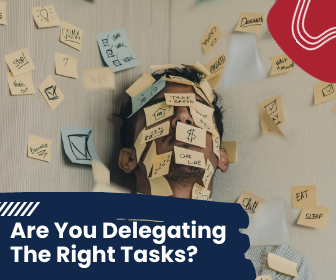
Our podcast, BeGrowthDriven, this week was all about things that are valuable to delegate to other businesses. Here the 5 things that we (and our guest Joe Camacho) found to be at the top of the delegation list!
Why Delegation?
We aren’t talking about just task delegation here. The delegation we are talking about is bigger than that. It can be easy an entrepreneur to try and wear all the hats yourself. We get that. However, there’s a lot of things that aren’t, uh, necessarily in your wheelhouse that can suck up a lot of time and effort. Delegation or farming out those tasks can free up your time so you can focus on the things you need to do to grow your business.

A lot of people hesitate to delegate some of these tasks because they think that if take care of it themselves, it will save money. That’s not always true. Sometimes short-term saving has long term costs.
Obviously, every company has different specialties so the tasks that need delegating will be different. However, these 5 are things that often fall into the category of thing that small companies try to do themselves and then up regretting it later.
#1 All the IT stuff
In this digital age, some IT services are a requirement. If you don’t know how to set up behind the scenes of a website or cloud services, it can be very time consuming (and expensive) to learn. There are so many companies and entrepreneurs who focus on IT services and management. They can help! Having it don’t right in the beginning will make it easier for the future.
#2 Compliance
Every year more and more regulations are added to the internet. Regulations about data usage, cookies, accessibility, etc. There are even more regulations if you are in specifics fields such as the medical and health industry. If you break a rule you didn’t even know was there can have serious consequences! Delegating compliance services to a specialist makes sure you don’t have any nasty surprises down the road.
#3 Branding
Branding is more than just a logo. It’s the entire outward facing personality of your brand! It can be difficult to look at your brand objectively, which is one of the reasons while delegating branding is a good idea! A graphic designer or branding agency knows the right questions to ask to help you figure out who your brand is. And they know all the technical things that need to happen to make sure your branding has the pieces you need to grow your business.

#4 Web Design
There are soooooo many free (or cheap) web design tools out there and honestly, some of them are really great! However, designing a website can be a lot more complicated than it appears. There’s a lot of technical aspects behind the scenes. Things like DNS and Domain Hosting are time consuming to learn how to set properly. Web design can be overwhelming and frustrating if it’s out of your element and might be worth delegating.
#5 Digital Advertising
Digital advertising is a massive field. There’s digital display, and programmatic adverting, and social media. There are entire agencies that do only Facebook ads! It can be difficult to know where to begin with online advertising: What software should you use? What’s the right channels for your business? What creative will work best? How much money should you invest? Where should you send the traffic you acquire? Delegating your digital ads will help you make money!
Some of these tasks we do for clients but others we delegate out ourselves! The key is to know what’s the best use of your time.
Did we miss any good tasks to delegate? Let us know!
What You Need To Know About SaaS

SaaS stands for software as a service and is sometimes known as “cloud-based software.” In the past few years, the Saas industry has exploded and has become the default type of software for most business technology. SaaS is differentiated from other cloud-based technology because it’s focus in entirely on products for business.
What’s the advantage of using SaaS?
What’s the advantage of using SaaS? There are many! For one thing, since Saas is entirely web based there’s no set up or installation and the software is maintained by the vendors. This allows business owners to focus on using the tools instead of learning complicated systems or maintaining hardware.
Another advantage is that most SaaS systems are paid for with a subscription. This eliminates setup expenses and cuts down on long term costs. SaaS user interfaces are usually highly customizable making an easy user experience. These two things making SaaS ideal for small business because it allows them to have powerful, potentially expensive software that could have otherwise been unattainable.
The SaaS Business Plan
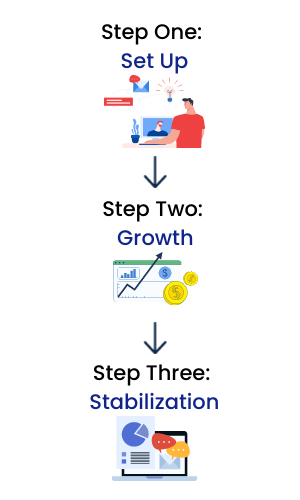
The SaaS business model is split into three parts. Part one is “Setup.” The setup phase is where is where you create the foundation for your business. Either by starting completely form scratch or integrating business data.
Step two is “Growth.” (which says a lot about the effectiveness of SaaS systems.) Once you have new customers, you’ll also have increased data about your customer base, and you can use that information to generate more customers. More customers also means more revenue that you can reinvest into your business.
Step three is “Stabilization.” In this phase you’ve created enough infrastructure that the systems you have in place can keep up with customer increases and you can refocus to other aspects of your business.
What are some examples of SaaS services?
Theres countless SaaS companies but some of the big SaaS companies include Google, HubSpot, MailChimp, Slack, SurveyMonkey, and Spotify. Adobe and Microsoft also have SaaS services available.
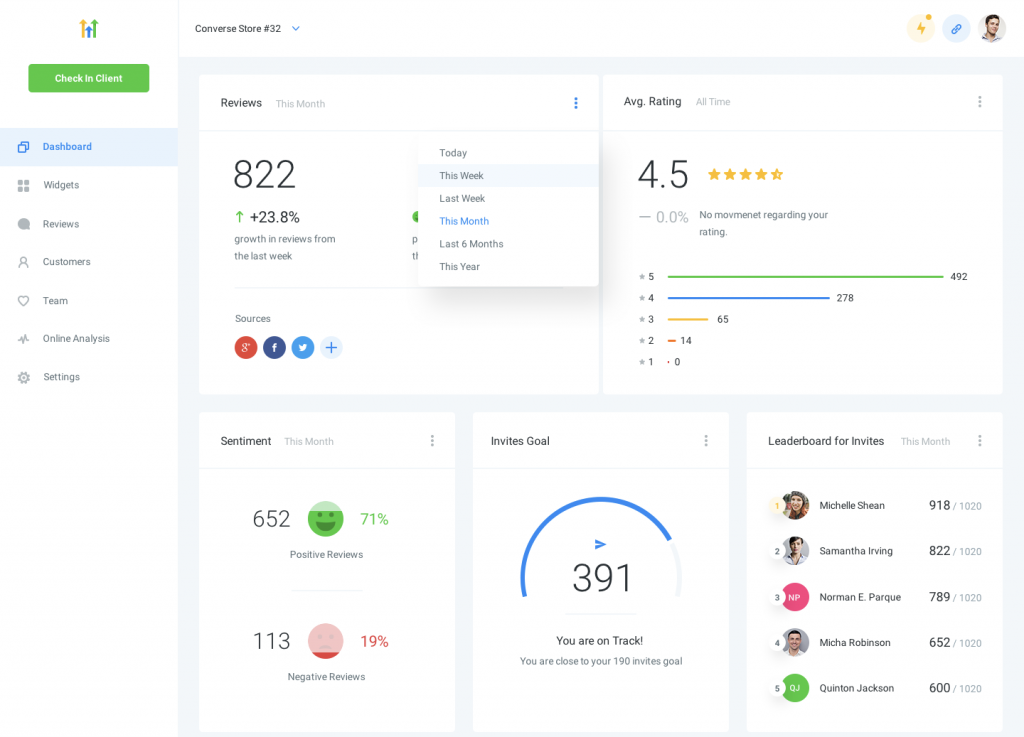
Here’s some SaaS companies we use every day:
- Twilio
- High Level
- LastPass
- Click Funnels.
What do you think the essential SaaS companies are?
Learn More about SaaS and business growth from High Level founder, Shaun Clark here.
Data & The Instagram Algorithm
The Instagram algorithm is the bane of some people’s existence. And yes, it is confusing since they moved from a chronological feed. It’s important to know how to best leverage the Instagram algorithm to make sure your content is being seen!

According to Instagram, they decide to show your content based on 6 factors:
#1: Interest
#2: Relationship
#3: Timeliness
#4: Frequency
#5: Following
#6: Usage
The first three are somewhat self-explanatory. Instagram shows you things based on what you’ve liked in the past. They highlight posts from people they’ve decided are close to you: people whose content you most engage with, the people who tag you, the people you DM etc. Instagram also cares about when you post. Keeping track of your analytics can give you a good idea about when the best times to post for you are.

#4 Frequency isn’t about how often you post but instead about how often interact with the app. The more often you check your Instagram feed the more likely your feed will be chronological because they are always trying to show you the newest content available. This is helpful to understand what type of Instagram users your followers are. If they don’t check the app that often, then it will be harder to have your posts seen. Building up the other 5 components to the algorithm will be all the more important.
#5 Following
Instagram assigns value to follower counts in a couple different ways. First, is simple: the more followers you have the more likely your posts will be highlighted in your follower’s feeds. However, they also look at your follower’s engagement levels. If you have a lot of ghost followers that don’t interact with you, then they could actually be hurting you. Another thing to consider, the more people your followers follow the more competition for space in their feed. Do your followers follow a lot of people? Understanding that can help you decide if you need to adjust where you focus your efforts.

#6 Usage
This is how Instagram qualifies the amount of time spent on the app. The more time spent on the app, the deeper into its catalogs they have to pull from to show content. You can use this to your advantage by using hashtags or developing content that matches with the interests of Instagram’s heavy users.
What ways do you try to leverage the Instagram algorithm to work for you?
Social Media Trends – 2021
Every year, as technology and culture change, social media adapts. Here’s three things that will take the forefront on social media in 2021!
Stories take over….
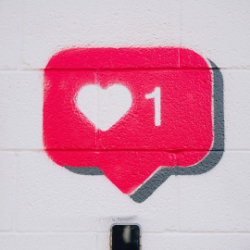
In the past couple years, one platform after another has adapted a “stories” feature. LinkedIn, Spotify, and Twitter all added stories features in 2020. (Pinterest added one the day this article came out!) Stories allow consumers to see bite sized pieces of content in a way that feels authentic. A lot of marketing automation platforms don’t have stories scheduling built in yet, so it’s a good idea to take some time and plan out your strategy and figure out what way of adding stories to your content will work best for you.
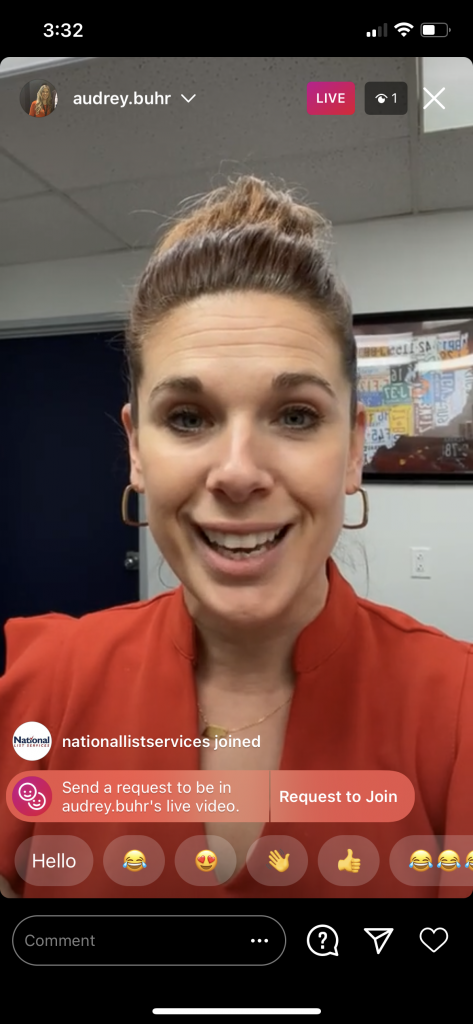
Go Live….
Lives have been popular on just about every platform for years. With the constant increase in content available, have that instant connection with audiences will be even more valuable in 2021.
Purpose driven brands and responsible consumerism….
2020 was defiantly a year for activism and accountability. More and more consumers expect the brands they interact with to uphold their same values. Social Media is the place where you can easily share what your company believes and what you are doing to stand up for your values.
What do you hope to see on social media in 2021?
A DOOH Overview
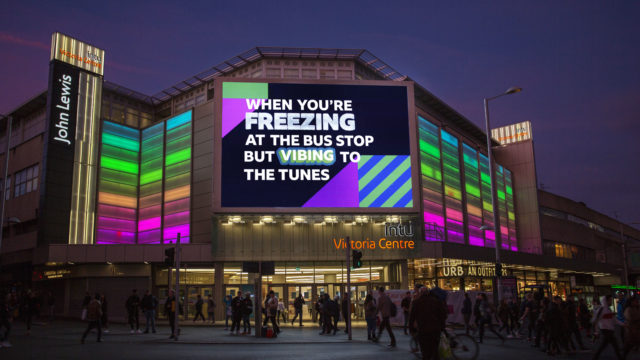
Digital Out-Of-Home (DOOH) is a return to old school advertising, combining the classic advertising experience with new technology and programmatic ad delivery. DOOH isn’t just roadside billboards anymore, digital advertisements can found just about anywhere now: elevators, gyms, airports, public transport, office buildings etc. Why is DOOH so popular?
According to MediaPost, DOOH is likely to become a more than $26 billion industry by 2023. Why? DOOH allows marketers to tailor their advertising to location, time of day, weather and traffic conditions, and more, making its reach and engagement highly effective.
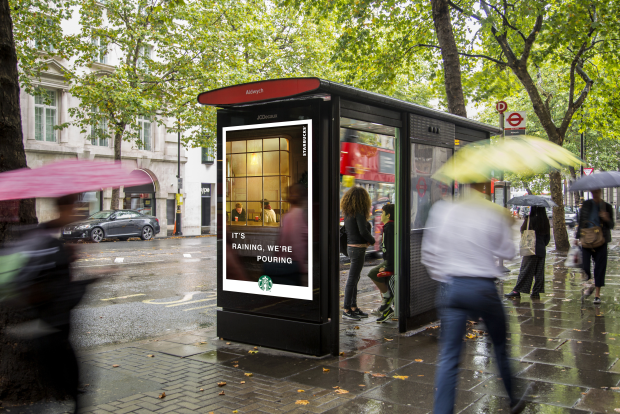
DOOH can be split into two main categories: large-format displays and digital place-based media. Large format displays are properly the main thing people think of when it comes to Digital display advertising. These displays are generally large format screens in high traffic areas such as highways and subways.
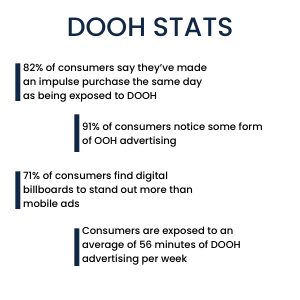
Digital place-based media are display screens located in “destinations.” These destinations are places that people are going to for a specific reason instead of just passing by.
What are the advantages of DOOH verses traditional out-of-home displays? DOOH allows marketers to update their messaging remotely and in real time. It also allows marketers to pick times of day and other factors when deciding when to show their ad.
Curious to know more about DOOH? Get in touch!
How Can You Increase Sales Volume?
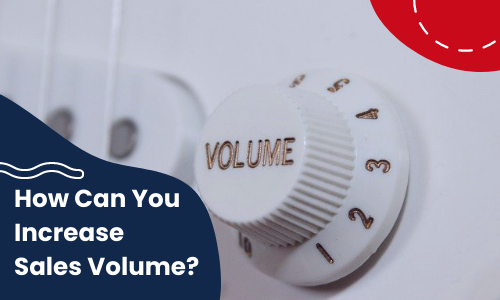
We all love talking about the big sale accomplishments, the brag worthy sales. But the day-to-day is often defined, not by the amount of a sale, but by the quantity of them. How can you increase sales volume?
Technically, sales volume is the percent of units sold within a period of time. Companies use sales volume to see what products are selling successfully.
What are some ways to increase sales volume?
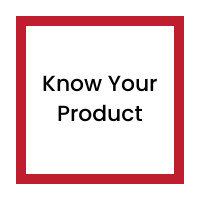
- Know your product. Do you know all the things that make your product superior to your competition? Why should a customer choose your product? What’s your elevator pitch?

- Focus on the benefits? All buyers have only one question: Does this solve my problem? They want to know that what they are receiving will benefit them and be worth the exchange of time and money.

- Sell to the right prospects. If your sales volume seems to be decreasing it may be a good time to reevaluate your target audience. It is also a good idea to get an updated a list.
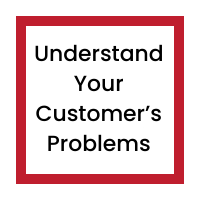
- Understand your customer’s problems. What problems are your target customers trying to solve?
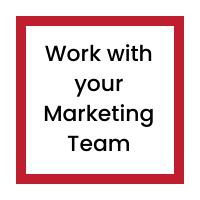
- Work with your marketing team. Your marketing team will be able to create content and structures to support your sales volume.

- Remember, time is money. Increasing your sales velocity or the amount of time it takes a prospect to move through your pipeline will positively impact your sales volume.
What ways have you found successful in increasing your sales volume?
The 4 Keys To Success In This Environment

We know all the ways things have changed this year. We also know how much trends ,such as relying on digital marketing channels, has sped up. It makes us wonder what we can do to survive and adapt with these changes. Here are four keys to success.
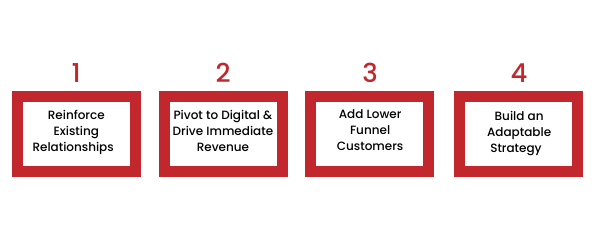
- Reinforce existing relationships. Which means reaching out and keeping in contact with existing and previous customers. Email and social channels are a great way to do this. Having up to date email and other information in your CRM is therefore, critical. Personalizing messages can help you stand out. It’s also important to figure out what channel your customers prefer to buy from you. Compare the current channels to what they preferred before this year to see the direction you should be focusing.
- Pivot to digital and drive immediate revenue. Without money coming in, it’s very hard to build a strategy for the future. Therefore, make sure your team and any tools or tech you need is ready to go.
- Acquire lower funnel customers. A lot of customers now are skipping the “passing interest” phase. They do research, find you, then buy. Making it easy for customers to find you when they are looking is important. Capitalize on lower funnel customers by knowing exactly how they got to you. One way to do that is by utilizing Pixel data. (Want more information on Pixels? Click here.)
- Position for success as this reverts back to “normal.” Have a plan. One thing to think about when building your plan is to create structures with the shifts in buying habits shift in mind. Test and experiment with different types of engagement now to see what channels to focus on on the future.
What do you think the key to successfully navigation the new marketing landscape is?
What’s Working in Marketing- 2020?

Eleven months into 2020, it is safe to say, this year has had a lot of surprises. So, what has working in marketing this year? Here is what we have found:
1) Customer Experience driven marketing. This encompasses a lot of things. The main things that we have found to be successful in 2020 are brand storytelling and personalization.

Our brain is literally wired to seek out and respond to narratives. And no matter what is happening around us, that isn’t going to change. We are going to connect and respond better to brands that tell us a story and bring us along on a journey. How are some companies implementing this strategy? YouTube series, podcasts, active social medias are popular first steps. (Learn more about customer journey’s here.)
Personalization is a big key in reaching your customer’s heart. Using the customer’s name in things like email subject lines is a good first step. Beyond that you can use audience segmentation to separate your audience into groups that share common characteristics like demographics and behavioral information. Using your audience segments to target your message to things that each group are actually invested in can greatly increase how personal your marketing will feel to the customer.
Utilizing Multi and Omni channel marketing strategies will also increase how smooth your brand experience is for your customers. (Learn more about building audiences here and here.)
2) Email. More than 50% of people in the US check their personal email over 10 times a day. Most people say that it is their preferred way to communicate with brands. Although “the end of email” has been threatened may times in recent years, 2020 has shown us that email isn’t going anywhere soon. For many companies, email became the only way they could communicate with their customers this year.
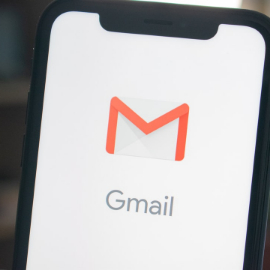
That means the margin for error with sending emails is relatively small. So. don’t forget to preview your email with different providers and devise before your send!
(Here are more email tips and tricks.)
3) Responsible consumerism and business practices. More than ever, consumers are aware of the effect their purchases have on the environment and on society and they want to buy from companies whose values align with theirs. People expect companies to actively fight injustices and be visibility support causes.
What has worked for your marketing this year?
